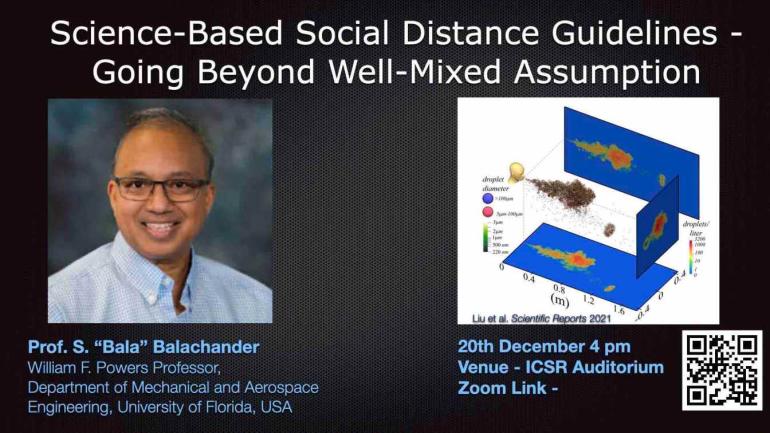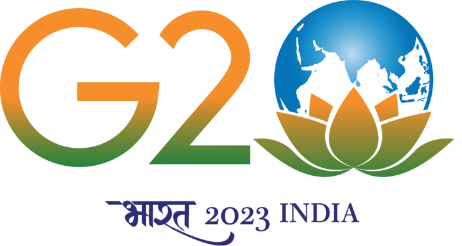
Science-Based Social Distance Guidelines - Going Beyond Well-Mixed Assumption
தேதி20th Dec 2021
Time04:00 PM
Venue ICSR Auditorium
PAST EVENT
Details
The recent Covid-19 pandemic has devastated the lives and the livelihood of millions of people around the world. This devastation has brought increased awareness to the manner in which infectious diseases spread among the population. In particular, it has now been well recognized that the dominant mode of Covid-19 transmission is the airborne route where the ejected virus laden small droplets quickly evaporate to become airborne nuclei and carried by the air currents before infecting receiving hosts. The rich aroma of fresh brewed coffee or roasted masala wafting through the air and reaching the far corners of a building provide ample evidence that airborne viruses can indeed travel long distances from their point of origin. In fact, many of the documented super spreading events from around the world have been connected with airborne transmission.
Infectiousness of an epidemic is measured in terms of the reproduction number, which is the number of positive transmissions per infected individual. Following the pioneering works of Wells and Riley, the assumption of a well-mixed air volume has been used by many others in quantifying the risk of infection in indoor spaces. Guidelines such as the 2 meters rule were developed based on the well-mixed assumption. However, it real indoor spaces, depending on the nature of ventilation, viral concentration can be substantially larger than the average obtained with the well-mixed assumption. On the other hand, there are receiver locations within the room where the pathogen concentration may be much smaller than the well-mixed concentration. In such cases, the average guideline can be either overly relaxed or overly restrictive.
This talk will present a universal statistical approach that accounts for the specific nature of the indoor space and its ventilation to obtain a simple correction factor that when applied to well-mixed theory is able to far more accurately estimate the risk of contagion. We are in the process of incorporating this improved prediction framework into a user-friendly tool that can be readily used to make science-based decisions on how many students to seat in a classroom, how to optimally orange tables in a restaurant, or how long to evacuate an operating room after in/out-tubing procedure.
Speakers
Prof. S. "Bala" Balachandar
Applied Mechanics

